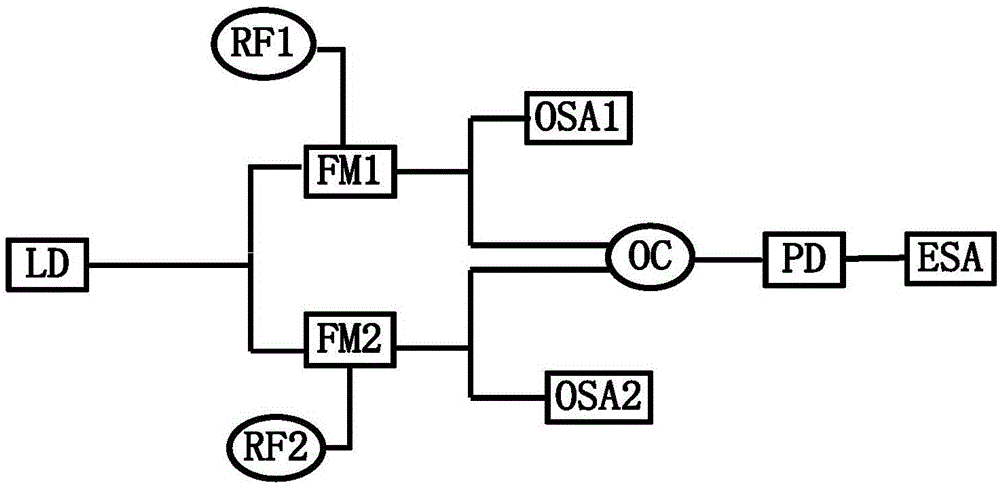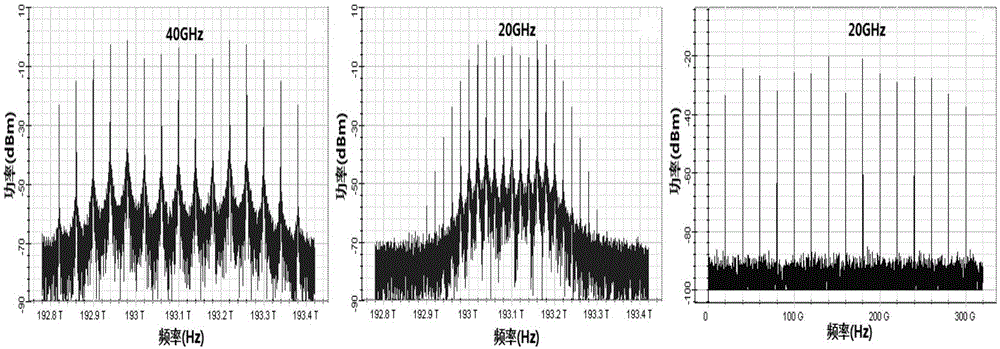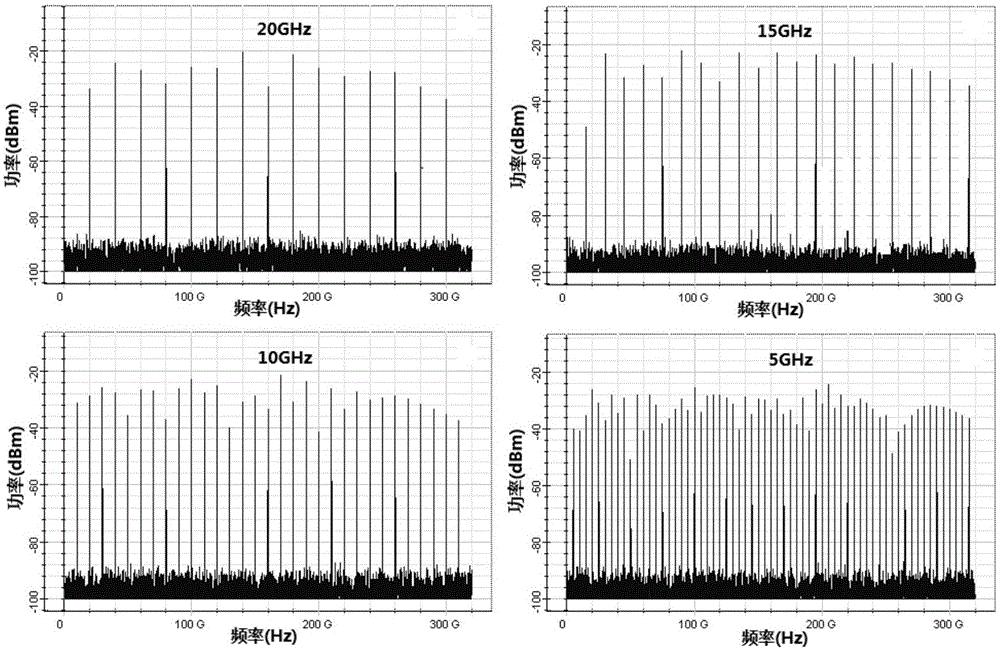Method for generating ultra-wideband multi-band frequency microwave signal
A microwave signal and generation method technology, applied in electromagnetic wave transmission systems, electromagnetic transmitters, electrical components, etc., can solve the problems of few frequency components, narrow and not many multi-band microwave signal spectrum bandwidths, etc., to achieve easy control, good Spectral characteristics, easy tuning effect
- Summary
- Abstract
- Description
- Claims
- Application Information
AI Technical Summary
Problems solved by technology
Method used
Image
Examples
Embodiment 1
[0031] 1. After the light source is modulated by FM1 and FM2, OFC1 and OFC2 with frequency spacing of 40 GHz and 20 GHz are generated respectively. After beating frequency, a multi-band microwave signal with a frequency spacing of 20 GHz, a spectral bandwidth of 300 GHz, and a good spectral line purity is obtained ( See attached figure 2 ).
[0032] 2. When the frequencies of RF1 and RF2 are set to f 1 =40GHz,f 2 = 20GHz; f 1 =30GHz, f 2 = 15GHz; f 1 =20GHz, f 2 = 10GHz; f 1 =10GHz,f 2 When =5GHz, the corresponding RF1 and RF2 frequency difference Δf is 20GHz, 15GHz, 10GHz and 5GHz successively, obtained the multi-band microwave signal that frequency interval is respectively 20GHz, 15GHz, 10GHz and 5GHz (see the image 3 ).
Embodiment 2
[0034] 3. Other parameters remain unchanged, and when the frequency offsets of FM1 and FM2 are set to 400GHz and 200GHz; 360GHz and 180GHz; 120GHz and 60GHz; 100GHz and 50GHz, four different multi-band microwave signals are generated. The spectral bandwidth of the output multi-band microwave signal increases as the frequency offset of the two FMs increases. When the FM frequency frequency offset increases to a certain value, the spectral bandwidth of the generated multi-band microwave signal remains unchanged. When the frequency offsets of FM1 and FM2 are 360GHz and 180GHz respectively, the spectrum envelope of the output multi-band microwave signal is the flattest, the average power is the highest, and the spectrum bandwidth is the largest (see attached Figure 4 ).
[0035] 4. When the input power of the light source is changed to 5dBm, 10dBm, 15dBm and 20dBm in turn, the average spectral power of the output multi-band microwave signal increases with the increase of the inp...
PUM
 Login to View More
Login to View More Abstract
Description
Claims
Application Information
 Login to View More
Login to View More - R&D
- Intellectual Property
- Life Sciences
- Materials
- Tech Scout
- Unparalleled Data Quality
- Higher Quality Content
- 60% Fewer Hallucinations
Browse by: Latest US Patents, China's latest patents, Technical Efficacy Thesaurus, Application Domain, Technology Topic, Popular Technical Reports.
© 2025 PatSnap. All rights reserved.Legal|Privacy policy|Modern Slavery Act Transparency Statement|Sitemap|About US| Contact US: help@patsnap.com



